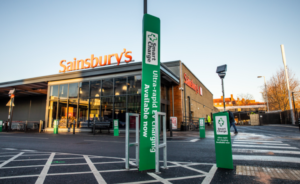London’s T-Charge ‘has benefited air quality’, Mayor claims
Introduction of a Toxicity Charge (T-Charge) in Central London has reduced the number of highly-polluting vehicles driving within the centre of the city by nearly a third, the Mayor of London, Sadiq Khan, has claimed.
The Mayor was questioned by London Assembly members at City Hall this afternoon (21 May) on steps his administration is taking to address environmental challenges in the capital through his Environmental Strategy, which was finalised earlier this month (see airqualitynews.com story).

Mayor of London, Sadiq Khan, faced questioning from Assembly Members at City Hall today
Assembly Members also questioned the Mayor on existing policies aimed at addressing air pollution in the city, including the T-Charge and the proposed early implementation of the Ultra-Low Emission Zone.
The T-Charge came into force in October and is an additional £10 charge on top of what drivers already pay to enter the Congestion Charge Zone. This applies to petrol and diesel vehicles which fall below the Euro 4 emission standard, operating during weekdays (see airqualitynews.com story).
Questioned on the impact of the measure by Conservative Assembly Member Shaun Bailey, the Mayor claimed that the step had already been shown to have had some impact in addressing nitrogen dioxide emissions in the centre of the city.
He said: “Since the charge there has been a 30% fall in the number of non-compliant vehicles in the congestion charge area. There were around 7,000 before [the implementation of the T-Charge in October] to 5,000 since.
“95% that enter the area now meet emissions standards, so really we are seeing a change in behaviour and that is leading to a better quality of air.”
ULEZ
The Mayor also defended plans to expand the proposed area covered by the Ultra-Low Emission Zone, which will further toughen emissions standards in the capital, and will cover a wider are than that currently covered by the T-Charge and the Congestion Charge.

A poster campaign launched to highlight the T-charge and other air quality measures
Asked how City Hall would seek to mitigate the potential impact that the measure would have on poorer households, the Mayor said that he would continue to lobby government over the introduction of a targeted scrappage scheme for older, more polluting diesel vehicles.
He also claimed that the introduction of two ‘Low Emission Bus Zones’, a first in Putney and a subsequent area in Brixton, where only buses with the cleanest exhaust emissions systems are allowed to operate, had contributed to further improvements in concentrations of nitrogen dioxide in the impacted areas.
“In Putney High Street we have seen a 90% reduction in hourly breaches [of the 200ug/m3 NO2 limit],” the Mayor said. “On Brixton Road where we have the second we think we have an 80% reduction in hourly breaches so far.”
Buses
The Mayor claimed that City Hall and TfL are on course to meet a commitment to have 12 Low Emission Bus Zones operating in the capital by the end of 2019, with 1,000 buses having been retrofitted with cleaner exhaust technology to date.
He also revealed that the next Low Emission Bus Zone to be rolled out in the capital will be in Lewisham, once a sufficient number of buses that meet the emissions standards are available to operate within the area.
Lib Dem Assembly Member Caroline Pidgeon also questioned the Mayor on whether he supports the development of a new cruise ship terminal at Enderby Wharf in Greenwich, which was not mentioned in the Envrionment Strategy, to which the Mayor replied that he ‘still had concerns about the proposals’.
Campaigners have opposed the plans on the grounds that there are no proposals to include onshore power supplies for docked ships, which would likely mean that they would have to use diesel generators for energy, which in turn could be detrimental to air quality in the area.
“I still have concerns about Enderby Wharf,” the Mayor said when pressed on the topic, adding that the ultimate responsibility for the site and any planning decisions lies with the local authority.
“I have also expressed my concerns about the River Thames not being not being in our purview,” the Mayor added, alluding to his call for a review of the powers governing the way that emissions from vessels operating on the River are governed.
















